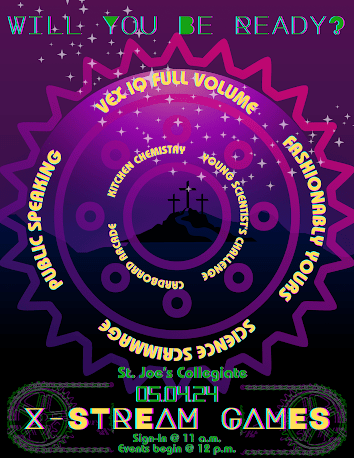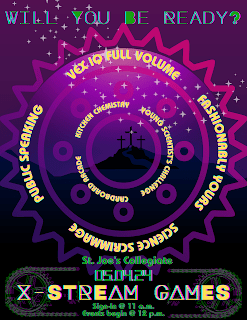Tech Class Vs. STREAM
“To develop a complete mind: Study the science of art; Study the art of science. Learn how to see. Realize that everything connects to everything else.” — Leonardo Da Vinci
I recently had a conversation with a parent who was confused about what their child does in my classroom.
"I thought you teach Technology," they said.
"I do," I replied, then added, "But that's only one part of what I do." I then explained how though I do include tech as part of my curriculum, "T" is among five other, equally important letters.
Here's my opinion: Technology is absolutely important for todays young learners.
Here's my other opinion: Technology should absolutely not be the primary focus of STREAM education.
In 2021, Sadlier published a blog post in which the author noted:
"A successful STREAM approach seamlessly integrates ideas from the six disciplines into learning experiences. It is a vision that requires planning, development, support, collaboration, and communication."I couldn't agree more.
Another conversation I'll share from this week was with my sister, who works at SUNY University at Albany as a Library Strategist and Librarian. She mentioned a recent strategy session she'd had with some stakeholders where they indicated that higher education is becoming more and more incorporative with fields of study reaching far beyond any one particular major or concentration.
This isn't actually recent news. A study published in the International Journal of Teaching and Learning in Higher Education in 2010 concludes,
"Based on the study findings, interdisciplinary teaching appeared to improve our preservice teachers’ ability to develop and reflect on curriculum, instruction, and assessment."I won't cite all of the additional articles I found in researching this post, but the interdisciplinary approach is happening in higher education, and it is the responsibility of those who are raising the next generation (parents and educators alike) to make sure our students have access to it as much as we can.
There are schools within our diocese who have chosen a strong emphasis on Technology when the topic of STREAM education comes up. In times past, this was certainly what educators across STEM/STEAM and STREAM were mainly focused on. However, as modern technology moves at a speed that even outpaces our current generation of elementary/middle school learners (and too often, our instructors!), any technology learning and usage in the classroom needs to be done deliberately and with care.
Some educators can be too reliant, keeping their students in front of screens more than providing opportunities for open, real-time discussion and interaction. Some educators are the opposite - perhaps using tech to show movies, but otherwise sticking to paper and pencils. It is crucial that educators find ways to strike the balance that most benefits our students.
A 2022 Edutopia article notes,
"When using technology in the elementary classroom, be judicious and intentional. Before implementing it, consider your goals for using it and whether it provides a functional improvement to a learning task. Documenting student learning, providing extra student support via audio or video, and enhancing student creation capabilities are all excellent ways for technology to improve the teaching and learning process."
In order to do this, educators need many opportunities (and the willingness) to have professional development that will enable then to keep better pace with classroom tech tools. If there are only a few teachers in the building who use tech (I call them Tech Gurus) as a singular instructional piece, it leaves open vulnerabilities such as:
- Students will not get the continuity and practice that they need (and truly they need some practice every single day!)
- If any of those Tech Gurus move on to other endeavors, it is very difficult to replace them with another TG that has the same knowledge set.
On the other hand, if for example the use of Google Classroom becomes the norm in most grades, then the students, parents, and even teachers who currently struggle, will quickly become adept at what to do with it. It is with routine use that users will develop the basic technological skills that are needed to move them into high school and beyond.
A well-rounded Catholic STREAM education should be looking at subjects and learning through an interdisciplinary lens, wherein there is collaboration within the building instructors (and beyond) which allows for congruent learning experiences. In doing so, this will inevitably lead to our vision of "Educating the Whole Child".
(c) Rachel J.L. Zeller 2024
All opinions and thoughts expressed are my own.
--------
Works Cited
Bertrand, Marja G., and Immaculate K. Namukasa. “A Pedagogical Model for STEAM Education.” Journal of Research in Innovative Teaching & Learning, no. 2, Emerald, Apr. 2022, pp. 169–91. Crossref, doi:10.1108/jrit-12-2021-0081.
Campbell, Cynthia, and Mary Beth Henning. “Planning, Teaching, and Assessing Elementary Education Interdisciplinary Curriculum.” International Journal of Teaching and Learning in Higher Education, no. Volume 22, Issue 2, International Journal of Teaching and Learning in Higher Education, 2010, pp. 179–86. https://files.eric.ed.gov/fulltext/EJ930151.pdf, https://www.isetl.org/ijtlhe/index.php.
ISSN 1812-9129
ISSN 1812-9129
Johnston, Allie. STREAM: A Catholic Interdisciplinary Approach to Learning. Sadlier, Inc, 5 Apr. 2021, https://www.sadlier.com/religion/blog/how-to-integrate-stream-curriculum-and-stream-learning-into-religious-education.
McMahon, Molly. “Nurturing Excellence: Exploring Whole-Child Education in U.S. Catholic Schools.” NCEA Talk, 22 Feb. 2024, https://nceatalk.org/2024/02/nurturing-excellence-exploring-whole-child-education-in-u-s-catholic-schools/.
Robinson, Avra. “Effective Uses of Technology in Elementary School | Edutopia.” Edutopia, George Lucas Educational Foundation, 21 Jan. 2022, https://www.edutopia.org/article/effective-uses-technology-elementary-school.
Torchia, Rebecca. “Technology in the Classroom & The Benefits for K-12 Schools | EdTech Magazine.” Technology Solutions That Drive Education, CDW, 16 Sept. 2022, https://edtechmagazine.com/k12/article/2022/09/benefits-integrating-technology-todays-k-12-classrooms-perfcon.
Wyttenbach, Melodie, et al. “Whole Child Education in United States Catholic Schools: A Roche Center Conceptualisation and Framework for Analysis.” International Studies in Catholic Education, Informa UK Limited, Oct. 2023, pp. 1–18. Crossref, doi:10.1080/19422539.2023.2267703.


Comments
Post a Comment